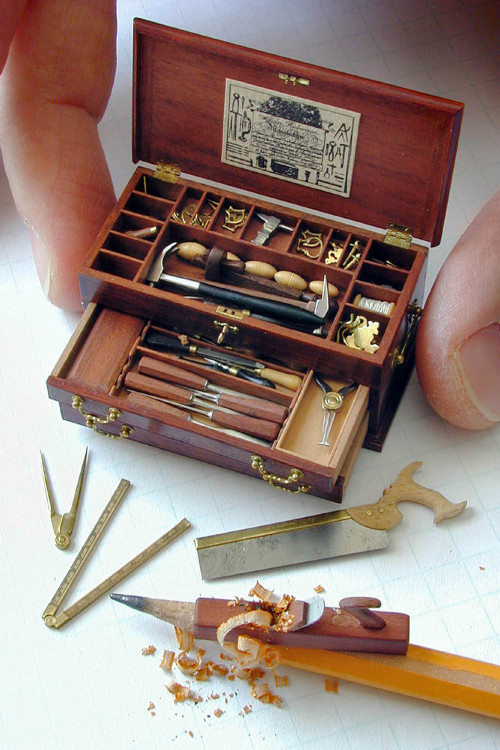Submitted by: LyseljusLeps
Tagged: almost a whoops , baby , gifs , Dad of the Year , dad Share on FacebookLeandro Pereira
Shared posts
Extracting data with USB HID

High security workstations have some pretty peculiar ways of securing data. One of these is disabling any USB flash drives that may find their way into a system’s USB port. Security is a cat and mouse game, so of course there’s a way around these measures. [d3ad0ne] came up with a way of dumping files onto an SD card by using the USB HID protocol.
We’ve seen this sort of thing before where a microcontroller carries an executable to extract data. Previously, the best method was to blink the Caps Lock LED on a keyboard, sending one bit at a time to a micocontroller. [d3ad0ne]‘s build exploits the USB HID protocol, but instead of 1 bit per second, he’s getting about 10kBps.
To extract data from a system, [ d3ad0ne] connects a Teensy microcontroller to the USB port. After opening up Notepad, [ d3ad0ne] mashes the Caps Lock key to force the Teensy to type out a script that can be made into an executable. This executable is a bare-bones application that can send any file back over the USB cable to the Teensy where it’s stored on an SD card. Short of filling the USB ports in a workstation with epoxy, there’s really no way to prevent secure files from leaking out of a computer.
Filed under: security hacks
The design behind RISC OS 4 and 6
PUNPUNPUNPUNPUNPUNPUNPUNPUNPUNPUN \o/

PUNPUNPUNPUNPUNPUNPUNPUNPUNPUNPUN \o/
Here Is A Cat Wearing An Iron Man Helmet Made Out Of A Grapefruit
That awkward moment when a police chase goes from your TV screen...
Finally, TI is producing simple, cheap WiFi modules

Ever responsive to the hobbyist market, Texas Instruments is releasing a very inexpensive, very simple WiFi module specifically designed for that Internet of Things.
The TI SimpleLink TI CC3000 WiFi module is a single-chip solution to putting 802.11b/g WiFi in just about every project you can dream up. Just about everything needed to put the Internet in a microcontroller is included in this chip – there’s a TCP/IP stack included on the chip, along with all the security stuff needed to actually connect to a network.
The inexpensive micocontroller WiFi solutions we’ve seen – including the very cool Electric Imp – had difficult, or at least odd, means of putting WiFi credentials such as the SSID and password onto the device. TI is simplifying this with SmartConfig, an app running on a phone, tablet, or PC that automagically takes care of setting up a link in a wireless network.
Best of all, the CC3000 only costs $10 in quantities of 1000. Compare that to other Internet of Things WiFi solutions, and it looks like we might be seeing and easy and cheap way to connect a project to the internet this year.
Filed under: Microcontrollers, wireless hacks
A really, really tiny tube amp
Leandro PereiraNão ia compartilhar. Mas a música.

After building his first tube amp from a kit, he set to work on his next amp build. Since tube amps are a much more experimental endeavor than their solid state brethren, [Jarek] decided to make his next amp unique with military surplus subminiature tubes, and in the process created the smallest tube amp we’ve ever seen.
Instead of bulky 12AX7s and EL34s tubes usually found in tube amp build, [Jarek] stumbled upon the subminiature dual triode 6021 tube, originally designed for ballistic missiles, military avionics, and most likely some equipment still classified to this day. These tubes not only reduced the size of the circuit; compared to larger amps, this tiny amplifier sips power.
The 100+ Volts required to get the tubes working is provided by a switched mode power supply, again keeping the size of the final project down. The results are awesome, as heard in the video after the break. There’s still a little hum coming from the amp, but this really is a fabulous piece of work made even more awesome through the use of very tiny tubes.
Filed under: classic hacks
Polymer film generates mechanical energy just by getting wet
 A new material leaps and rolls across a wet surface.
Ning Zhang
A new material leaps and rolls across a wet surface.
Ning Zhang
Polymers that change shape, size, or stiffness in response to light, heat, or liquids could be useful materials that power mechanical devices. Alternatively, that induced motion could be used to generate electricity for low-power devices.
Some polymers swell in water, which can make them suitable as an artificial muscle. Current materials can’t replicate motion that’s as smooth, fast, and powerful as muscle contractions, though careful design has now helped scientists improve the performance of water-induced material actuators. And, in the process, they've made a device that can slowly charge a capacitor—just by getting wet.
Mingming Ma and co-workers at the Massachusetts Institute of Technology built a material that has strands of a water-responsive polymer called polypyrrole held between a rigid skeleton of a different polymer (made from branched ethylene glycol connected with borate groups). This construction mimics the structure of our muscle fibers, which have strings of stretchy fibers surrounded by a rigid matrix of collagen.

























